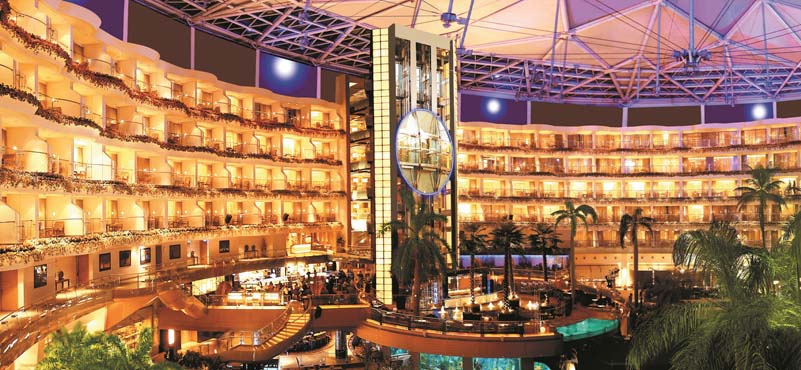Share the post "India’s Blue Economy & Ecotourism: A Sustainable Voyage Towards 2047"
A recent landmark announcement by Dr Vibha Dhawan, Director General of TERI drew attention to the Memorandum of Understanding signed by them with Government of Goa on 9 April 2025 to collaborate in promoting the Blue Economy and Ecotourism, targeting:

A UN Tourism and Environment specialist
1. Revival of Khazan lands;
2. Establishing a “Centre of Excellence for Natural Resource Management and Ecotourism” in Goa, focussed on:
- Coastal and marine resource management
- Promotion of the Blue Economy
- Climate change mitigation
- Biodiversity conservation
- Agriculture
- Livelihood enhancement
- Water resource conservation
- Eco-tourism
- Sustainable and renewable energy
- Mining, and related sectors.
TERI will provide technical support and capacity building for the initiative. This synchs in with global thematic concerns, namely #BeatPlasticPollution on World Environment Day, 5 June 2025.
TERI has also created an in-depth broad canvas view of their countrywide support to small/marginalized rural communities. In all cases, Site finalisation will be preceded by:
1. Asset listing/Baseline diagnostic;
2. Firm funds allocation;
3. Governance structure;
4. Time-lined Work Plans (‘software’ + ‘hardware’), also addressing energy, environment, water;
5. Implementation responsibility for Focal Point (District Collector/MD-State Tourism), Local Implementation Committee, District Coordination Committee, up to Working Group (WG);
6. FAITH (Federation of Associations of Indian Tourism and Hospitality) clear assent; and
7. NGO partner’s livelihoods outreach to local women, employable youth and MSMEs.
Likewise, Site finalisation will invariably be followed by:
1. Demonstrable local community participation;
2. Vigorous Supervision, Monitoring & Evaluation for Work Plans’ implementation;
3. Target shift from merely numerical to yield-based;
4. Data reliability;
5. Scientific, monitorable indices; and
6. Visitor#local adjustment.
The anticipated Vision India@2047 document holds high outputs for India’s GDP. The Working Group will incorporate this GDP Vision India@2047 ecosystem to project:
*Phased all-season development revenue and yield targets for all segments;
**Equitable local share in livelihoods for supply chain, especially women, youth, and MSMEs.
Mid-term assessment for next steps per Vision India@2047, will proceed on the same tenets:
- Back-end (product) and front-end (market) readiness;
- Safe environs for domestic and international visitors, investors, and local communities;
- Safeguards and care codes, especially for locally owned natural and cultural assets.
Besides, the invited project specialist will deploy domain expertise for:
- Framework support to the Goa Centre of Excellence, per successfully operational Sikkim Centre; and
- Ecotourism and promotion of the Blue Economy.
 To optimise implementation thrust, TERI may consider flagging these objectives for World Tourism Day 27 September 2025.
To optimise implementation thrust, TERI may consider flagging these objectives for World Tourism Day 27 September 2025.
But here and now, as spaceship AXIOM docks at the International Space Station with India’s second ever astronaut aboard, elation is welcome, projecting limitless discovery, just as the human spirit unshackles yet more boundaries.
Nevertheless, what on earth (or outer space!) does that have to do with the blue economy and tourism? The answer quite simply lies in Indian astronaut Groupie Shukla’s focus on the thrill of beholding the great beyond.
Switching wanderlust enigma, Lakshadweep’s story began taking its present shape some 51 years ago when the first all-weather ship to the archipelago, MV Amindivi, set sail for the south-western corner of India on the edge of the Arabian Sea in 1974. Visitors could disembark for onshore day excursions… clutching their all-important permits. That vital document also imparted an unintended environment safeguard, limiting the tourism footprint to the vessel’s carrying capacity.
Soon enough the world’s most exotic lagoon, in Lakshadweep’s Bangaram Island, was host to a double hardsell… of product and destination. Messaged simply, unfetterred: gentlest maritime swell anywhere, opening out to mysterious life forms in the cavernous continental shelf, seamlessly reached… whether for snorkel, scuba, deep sea dive or glass bottom boat enthusiast. Air India’s Centaur Group was assigned operational responsibility. One adwag copy evidently ran: should you wish to nibble unhurried in paradise, choose your coconut tree and wait for the coconut to fall!
Catching one’s breath, this backdrop enables a peep into Blue Economy grid perspectives, connected all the way with SDG 14 exhortation to conserve and responsibly use oceanic, seaborne and marine resources for sustainable development. The blue economy is therefore an all pervasive, dynamic resource which, correctly fathomed, could anchor diverse livelihoods supply chains, including tourism, fisheries, offshore energy sources, protecting the health of oceanic and coastal ecosystems, as well as maritime security.
India’s contours of this resource stretch far and wide. Our coastline measures 7500 km with an EEZ exceeding two million square kilometres, and encompasses naval bases, one dozen heavy duty ports, interspersed with 200 plus other ports, 30 shipyards, and a complex matrix of maritime service providers.
This is not all. Our two island chains, Lakshadweep and the Andaman & Nicobar archipelago each possess alluring tourism equity, beset nonetheless by the universal impact of climate change and ‘development’. Even so, while the Andaman & Nicobar Islands grapple with present day submarine volcanic tsunami tectonics, little Lakshadweep sounded the ding on the high-end sea-resort dong.
Highest level endorsement has also been accorded to the Second BIMSTEC* Ports Conclave in Visakhapatnam this month where the key highlights include ‘Cruise Tourism – Discovering Heritage and Eco-Tourism Circuits’ (*Bangladesh, Bhutan, India, Myanmar, Nepal, Sri Lanka, Thailand).
Of course there are challenges. But would anyone doubt Groupie Shukla exclaiming high above Bangaram or Car Nicobar, hurtling home through space at 28000 km per hour, “sare jahan se achha”.





